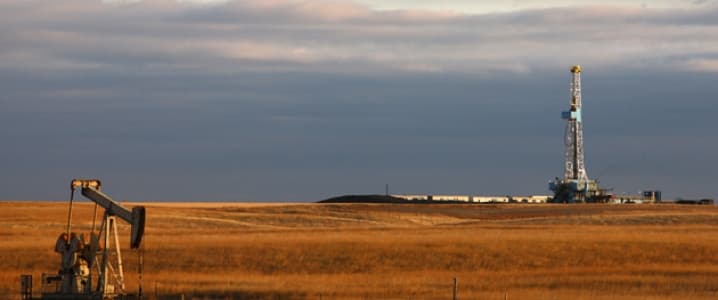While the Permian field has enjoyed a continued boom, with a rising rig count and an increase in investment activity, other U.S. onshore shale and tight oil fields haven’t been so lucky. Higher costs, declining investment and tougher competition have hit the Bakken field harder than the Permian.
A slight recovery might be in progress, coming in the wake of OPEC production cuts and rising industry confidence, despite the on-going presence of bearish fundamentals and an evident supply glut. New pipelines could also lower Bakken costs and allow a faster recovery. But prospects for the region to compete with the surging Permian seem dim, at least in the short term.
For the last few years, the news out of North Dakota wasn’t pretty. The Bakken, once the center of a regional energy boom, saw a major slump in activity. Since hitting a peak of 1.23 million bpd in December 2014, Bakken crude production has declined, falling below 900 thousand bpd in late 2016, while the rig count has declined to less than fifty, according to monthly EIA data, from a high of 183 in 2014.
North Dakota, which holds the bulk of the Bakken field, has seen its production swing back and forth since October, chiefly due to the vicissitudes of the winter weather. The state sees an economic decline every year when the bitter winter kicks in, but this year oil and gas production was hit particularly hard. In December, total production fell by 10 percent to record lows, as three major storms interfered with activity and forced a number of rigs to shut down. A recovery in January brought those rigs back on-line, but the long-term trends have some wondering if the Bakken play is a bust. Related: Russia Gains Upper Hand In Asian Oil War
The EIA is now predicting total Bakken production to fall in March 2017 from 994 to 976 thousand bpd, while gas production holds steady at around 1.7 billion cfd. This is the biggest anticipated decline of any U.S. field and pales in comparison to the Permian forecast, where oil production is expected to surge another 70 thousand bpd.
The reason for the Bakken bust? Tight competition last year drove investors from the field and pulled more money south to the Permian, where conditions are more favorable and interest more concentrated. A boost in prices thanks to the OPEC deal has brought relief to U.S. shale, but recovery seems to be concentrated in the Permian, where around half of US rigs are located.
There is some good news for the Bakken, however. Support for the Dakota Access Pipeline from the Trump Administration, which may allow the controversial pipeline to be completed, would make transportation from the Bakken more economical and drive down the breakeven price. Of the 1 million bpd produced by the Bakken, only about half can be transported by pipeline, with the rest going out by rail. The Dakota Access will open up about 450,000 bpd of capacity, obviating the need to move oil by rail, a much more expensive proposition.
Yet with resistance to the project high, and the likelihood of continued protests in the area a certainty, there are no guarantees quite yet that the pipeline will be completed as originally planned. The pipeline is currently about 90 percent completed, and with approval would be finished in three to four months. Related: The Shift Towards Renewables Is Picking Up Pace
Some energy firms are confident that the Bakken’s future looks bright. Hess Corporation, which is already heavily involved in North Dakota, has earmarked $2.25 billion exploration and production in the Bakken in 2017, and the company plans to increase Bakken rigs from two to six by year’s end.
Should the Dakota Access, along with the long-awaited Keystone XL pipeline, be completed and prices in the Bakken drop, it could bring about a renaissance for the region and increase its competitiveness with the Permian field. The Trump Administration, which has long vowed to work to bring more jobs and prosperity to the U.S. energy sector, believes constructing these pipelines will accomplish those goals. But as a recent New York Times story made quite clear, automation and changing technology has allowed production in the Permian and elsewhere to pick up without bringing a recovery in jobs.
So, even if the Bakken comes roaring back to life, there’s no guarantee the boom towns of North Dakota will enjoy a similar resurgence.
By Gregory Brew for Oilprice.com
More Top Reads From Oilprice.com:
- Middle East Oil & Gas Investment Surges To $294 Billion
- This Oil Nation Aims To Colonize Mars
- Is Big Oil Underestimating Autonomous Vehicles?


















